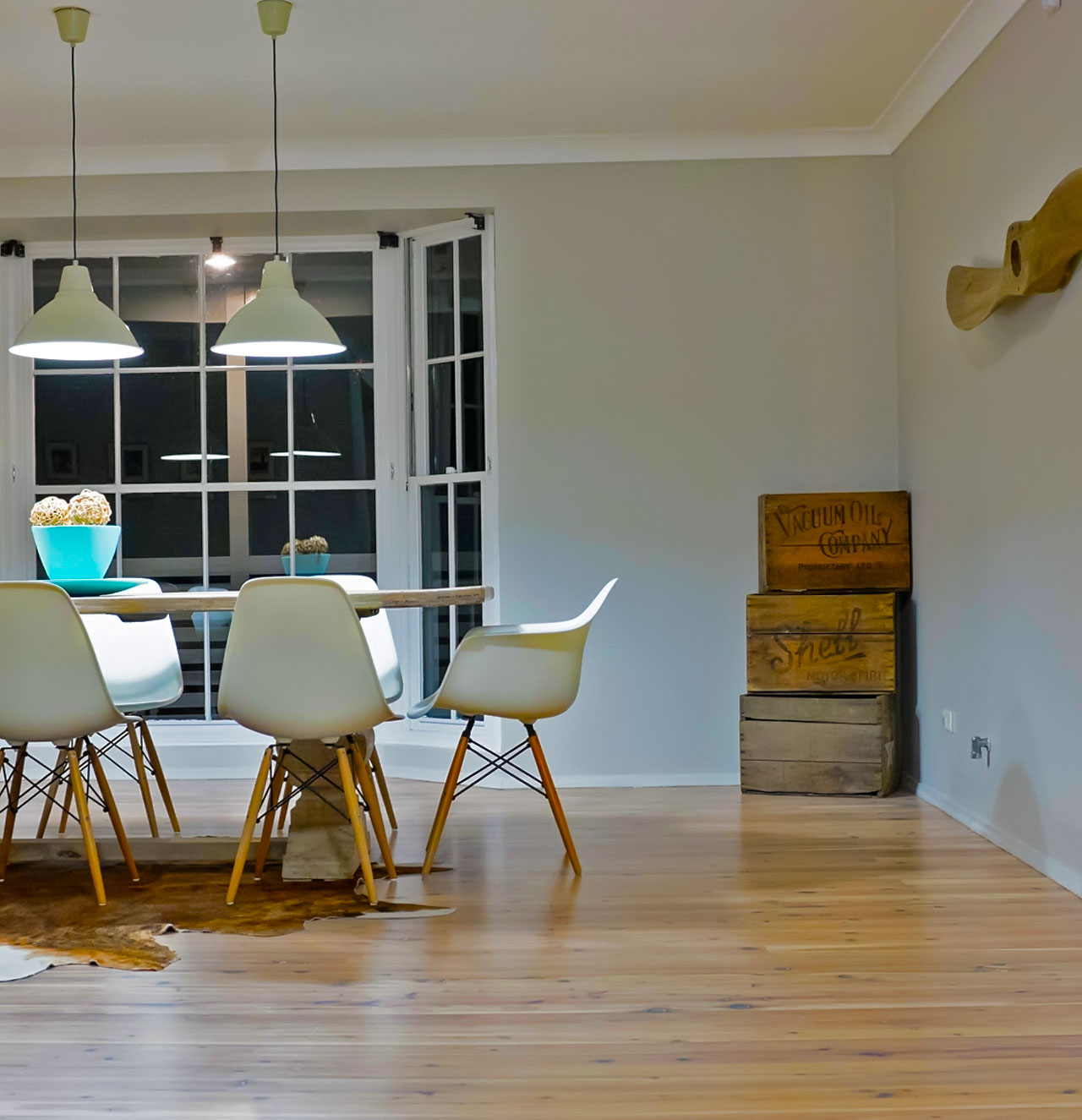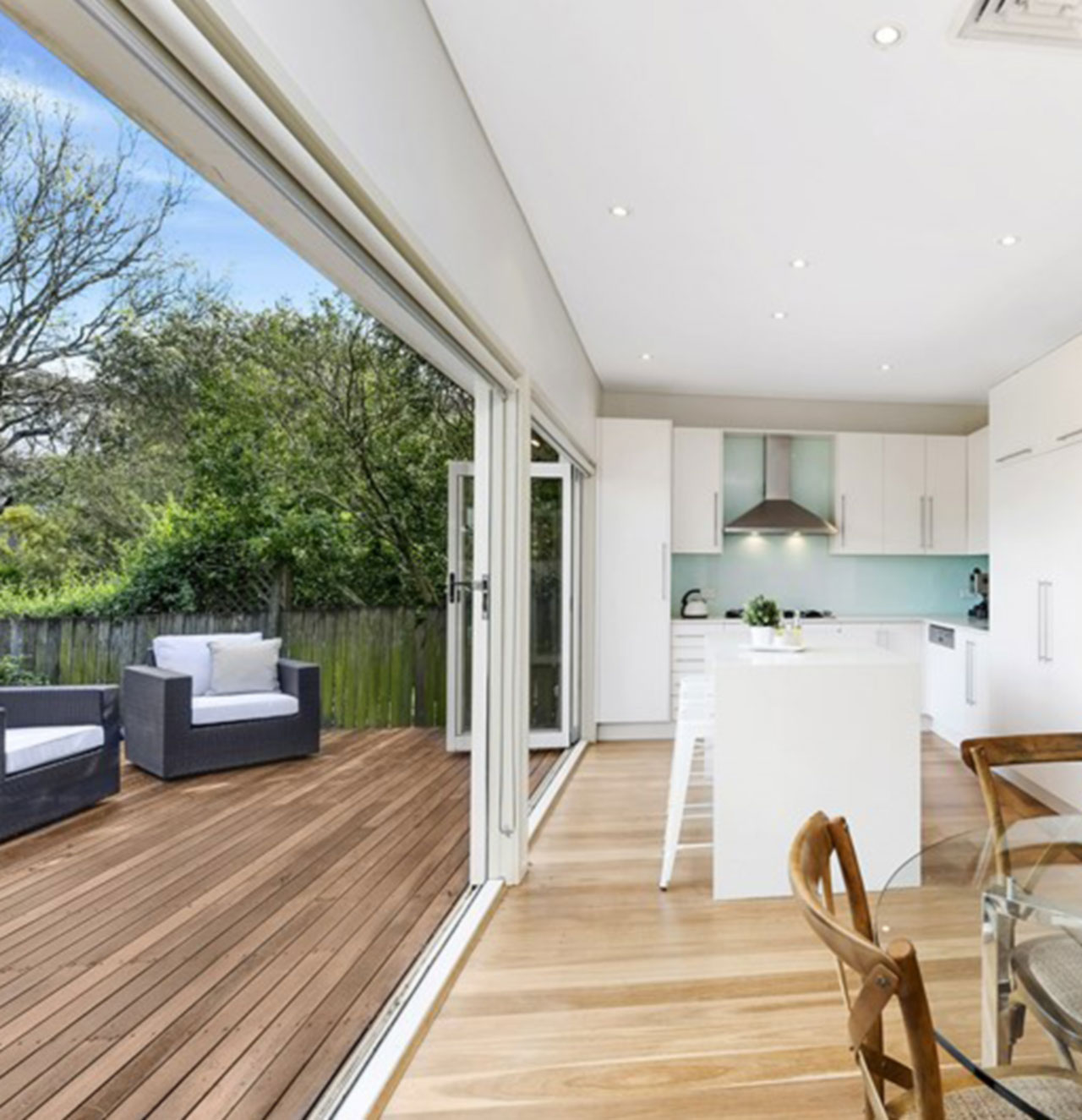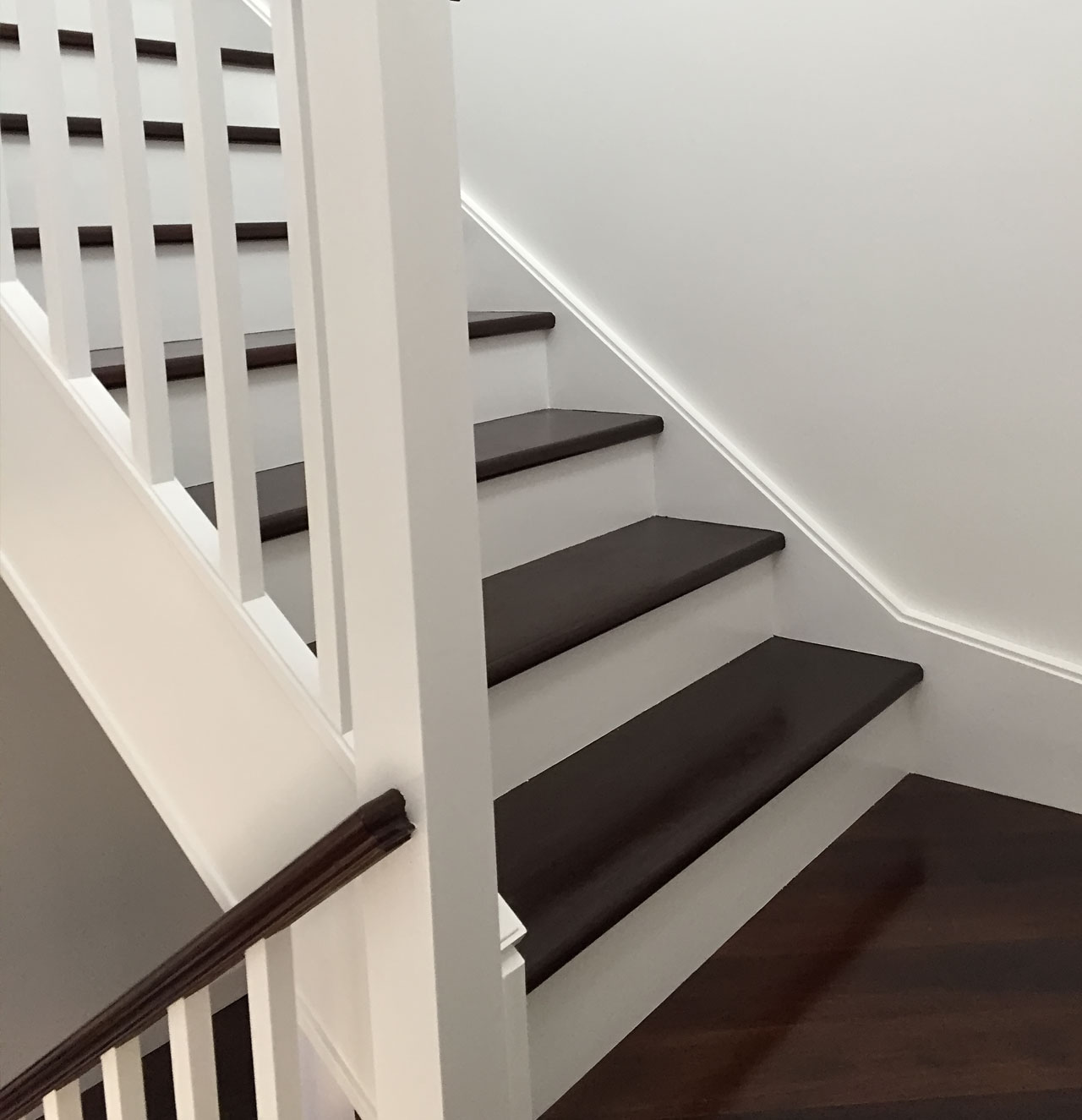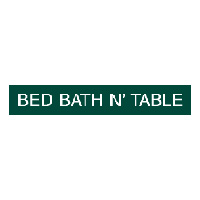Preparation Tips
Natural timber floors, just like all quality products, must be handled, stored, installed and maintained with care to ensure excellent service.This section answers many of the most asked questions about tongue and groove natural timber floors and highlights important precautions and considerations which you should discuss with your chosen flooring supplier, builder and installer before you proceed.
Experience has shown that where dissatisfaction with a timber and groove floor occurs, simple precautions and sensible care have usually been ignored at some stage during the delivery, on site storage, installation or general care of the floor, or that customers are unaware of the consequences of their choices and decisions.
- Jump to a section:
- Which Timber To Choose?
- Timber Colour
- Timber Features
- Board Width
- Natural Shrinkage and Expansion
- Choosing a Timber Finish
- Home Design Considerations
- Transport and On Site storage
- Laying and Acclimatisation
Which Timber to Choose?
Choosing the right floor for your home will probably be the most difficult step, only because of the huge selection from which you can choose. The following information will assist you to understand the alternatives and help you to ask the right questions when discussing the various options with your flooring supplier.Timber Colour
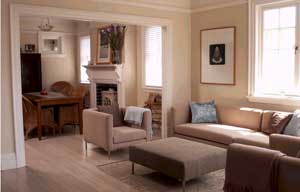 This is purely a personal and aesthetic choice. The general colour will be determined by the timber species. However, even within one species there will be natural variations. Some species exhibit only small variations while others vary greatly. Remember timber is a natural product and no matter how big a sample you have seen, your floor will be different from the sample and completely unique.
This is purely a personal and aesthetic choice. The general colour will be determined by the timber species. However, even within one species there will be natural variations. Some species exhibit only small variations while others vary greatly. Remember timber is a natural product and no matter how big a sample you have seen, your floor will be different from the sample and completely unique.The true colour of a floor will only become evident after it has been sanded and coated with a chosen finish. A darker floor will make the room appear darker, and may therefore require more available daylight and/or artificial light sources. Lighter coloured floors tend to show dirt and marks less than darker floors.
Timber Features.
Depending on the species chosen, various mixes may be available. You may prefer a mix which exhibits the maximum variety of natural features including colour, knots, gum vein (generally dark lines) and insect markings to provide unique visual impact, or you may prefer a mix which offers maximum continuity and consistency with few outstanding features. Discuss the normal variation encountered in your chosen species and also the available options with your flooring supplier.Board Width
Tongue and grooved flooring is generally supplied in nominal profile widths of 75mm, 100mm or 150mm. (Actual cover width of boards will vary depending on the profile type)> The width of the boards and the direction they are laid will affect the look of a room. Generally boards laid along a room will the make room look longer while boards laid across a room will make it wider. Other factors such as the subfloor materials may control the direction the boards must be laid. The wider the floor board the greater the natural shrinkage/expansion across the face. Therefore during dry periods wider boards may exhibit slightly wider gaps between boards and cupping may also be more apparent. Both of these conditions generally disappear after a reasonable period of normal humidity/ weather conditions.Natural Shrinkage and Expansion
It is most important to understand that tongue and groove timber floors are not synthetic or man made, but are a completely natural material which is sawn, seasoned and machined to a suitable profile. Natural timber is hygroscopic, that is it continually takes up and gives off moisture to keep in balance with its surroundings. This results in a process of natural shrinkage and expansion. Depending on the timber species chosen, visible shrinkage and/or expansion may take a day, a week or even months, resulting in the gaps between floor boards opening and closing depending upon the weather, the season and local influences. To reduce the degree of shrinkage and expansion, today's timber flooring is generally seasoned or kiln dried to average moisture content of between 10% and 15%. This is considered to be a good starting point for the majority of installations, but as you will read later, many other local factors influence the atmospheric moisture content around and in you your home and therefore affect your floor.Choosing a Timber Finish
Tung Oil
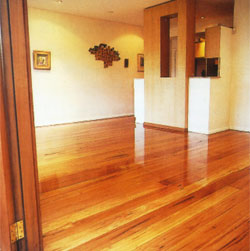 Traditional tung oil finishes produce a subdued or semi-gloss appearance. Tung-oil is a drying oil which is extracted from the seeds of a tree. When applied, it is absorbed slightly into the surface of the timber and allows the natural seasonal shrinkage and expansion to occur without highlighting the gaps between boards. Although this finish may show marks more easily than hard surface finishes, most marks are generally easily removed with a little methylated spirits on a damp cloth. Provided tung-oil finishes have not been waxed, areas which receive most traffic can be recoated to restore their appearance, and these will generally blend quickly with the surrounding original finish.
Traditional tung oil finishes produce a subdued or semi-gloss appearance. Tung-oil is a drying oil which is extracted from the seeds of a tree. When applied, it is absorbed slightly into the surface of the timber and allows the natural seasonal shrinkage and expansion to occur without highlighting the gaps between boards. Although this finish may show marks more easily than hard surface finishes, most marks are generally easily removed with a little methylated spirits on a damp cloth. Provided tung-oil finishes have not been waxed, areas which receive most traffic can be recoated to restore their appearance, and these will generally blend quickly with the surrounding original finish.Polyurethane
Modern polyurethane finishes (one or two can plastics) provide a smooth, hard and very glossy surface. However, because these finishes flow into the tongue and groove joint between boards and glue the boards together, when natural shrinkage occurs, boards tend to clump together causing unsightly gaps between some boards at irregular spacing or splitting within some boards. To reduce this effect, great care must be taken to ensure that before coating, the flooring timber has reached the correct moisture content for the location and that the location remains within a narrow moisture content range.When a restoration of an area such as around doorways or a halfway is required, generally the entire floor area will require sanding to remove the original polyurethane coating before a new coat can be applied. High gloss surfaces also reflect more glare from windows, particularly where glass areas extend to the floor and the high reflection qualities will nearly always highlight dust, even just after cleaning. If you wish to use a polyurethane finish, it is strongly recommended that you obtain a copy of the State Forests of N.S.W. leaflet titled 'Polyurethane Finishes on Timber Floors' available from State Forests, TDA or your flooring supplier/ installer.
Home Design Considerations
Shrinkage and expansion of timber floor boards is a natural and cyclical process. The degree of movement depends on the surrounding changes in atmospheric moisture content and therefore is generally controlled by seasonal weather conditions. Changes are most evident during long periods of either dry or wet conditions. However, local conditions also have considerable influence.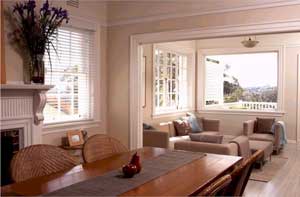 Good ventilation under your floor is a very significant factor in a successful installation. Minimum ventilation recommendations may not be adequate for your site. Excessive humidity in the under floor area can be caused by the lack of sufficient cross ventilation or from damp soil conditions arising from poor drainage. Ensure that water from gardens or storm water does not drain under the floor area and that no water lays in the under floor area. Air conditioning and heating systems dramatically reduce the general moisture content within a home. Your flooring specialist should be made aware that these systems are to be used. It may be necessary or advisable before laying/ coating to operate these systems and to acclimatise the flooring to the average conditions in these situations.
Good ventilation under your floor is a very significant factor in a successful installation. Minimum ventilation recommendations may not be adequate for your site. Excessive humidity in the under floor area can be caused by the lack of sufficient cross ventilation or from damp soil conditions arising from poor drainage. Ensure that water from gardens or storm water does not drain under the floor area and that no water lays in the under floor area. Air conditioning and heating systems dramatically reduce the general moisture content within a home. Your flooring specialist should be made aware that these systems are to be used. It may be necessary or advisable before laying/ coating to operate these systems and to acclimatise the flooring to the average conditions in these situations.Shutting a house up when away on holidays for long periods can also create abnormal humidity conditions. Full length windows, large glass areas which admit direct sunlight can create sunroom conditions with high temperatures and low moisture conditions causing flooring to shrink. direct sunlight will also cause colour changes to the timber, so moving rugs occasionally, and the use of curtains or blinds are a good idea. If your home is located close to a body of water such as the ocean, a river, lake, dam or wetlands, or if it will experience prevailing winds which may direct particularly moist or dry air towards your home, special moisture control measures may be required. Expert advice should be sought.
Transport and On Site storage
It is most important to ensure a suitable on site storage location is available before delivery is arranged as incorrect storage will damage the timber and/or delay laying.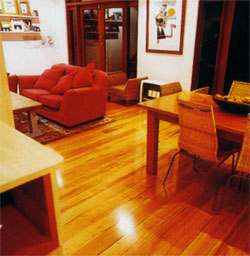 All flooring timbers should be protected from the elements and direct sun and where the atmospheric moisture content is similar to the level expected in your house. In all locations the timber pack should be stored at least 200mm off the ground/concrete, with even supports to maintain straight boards and to allow good ventilation to all pack faces. A moisture barrier between the ground and concrete floor and the underside of the timber is essential.
All flooring timbers should be protected from the elements and direct sun and where the atmospheric moisture content is similar to the level expected in your house. In all locations the timber pack should be stored at least 200mm off the ground/concrete, with even supports to maintain straight boards and to allow good ventilation to all pack faces. A moisture barrier between the ground and concrete floor and the underside of the timber is essential.Do not store timber in plastic wrapping exposed to direct sun as this limits air circulation and exposes the timber to extremely high temperatures which causes sweating. Do not store timber on a fresh concrete floor or in a recently cement rendered room as the timber will absorb moisture from the dying concrete.
Laying and Acclimatisation
Depending upon the situation it may be necessary or advisable to acclimatise the flooring to its proposed location prior to fixing. By discussing all points on the check list with your chosen flooring specialists they will be able to advise on the need for on-site acclimatisation as well as suitable methods and timing. It is not advisable to fix acclimatised timber flooring during or just after extended periods of wet or dry weather. In this case allow a period of normal weather conditions before fixing.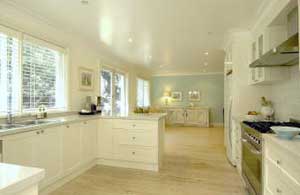 Additional information on acclimatising timber flooring is also available in a leaflet produced by State Forests of N.S.W..
Additional information on acclimatising timber flooring is also available in a leaflet produced by State Forests of N.S.W..It is preferable to lay flooring only after all 'Wet Trades' such as brick cleaning, rendering, plastering and tiling have finished. Plastic laid over the floor to protect it from wet trades often raises the moisture content of the flooring timber and can be counter productive. Close monitoring is required in this situation. Ensure expansion gaps of 10mm to 12mm are left between boards and the wall. These are usually covered by skirting boards or filled with cork strip.
Before fixing, ensure that your contractor has checked the flooring moisture content.
Reprinted with permission from a brochure published by: TDA. Timber Development Association (N.S.W.) Ltd www.timber.net.au
